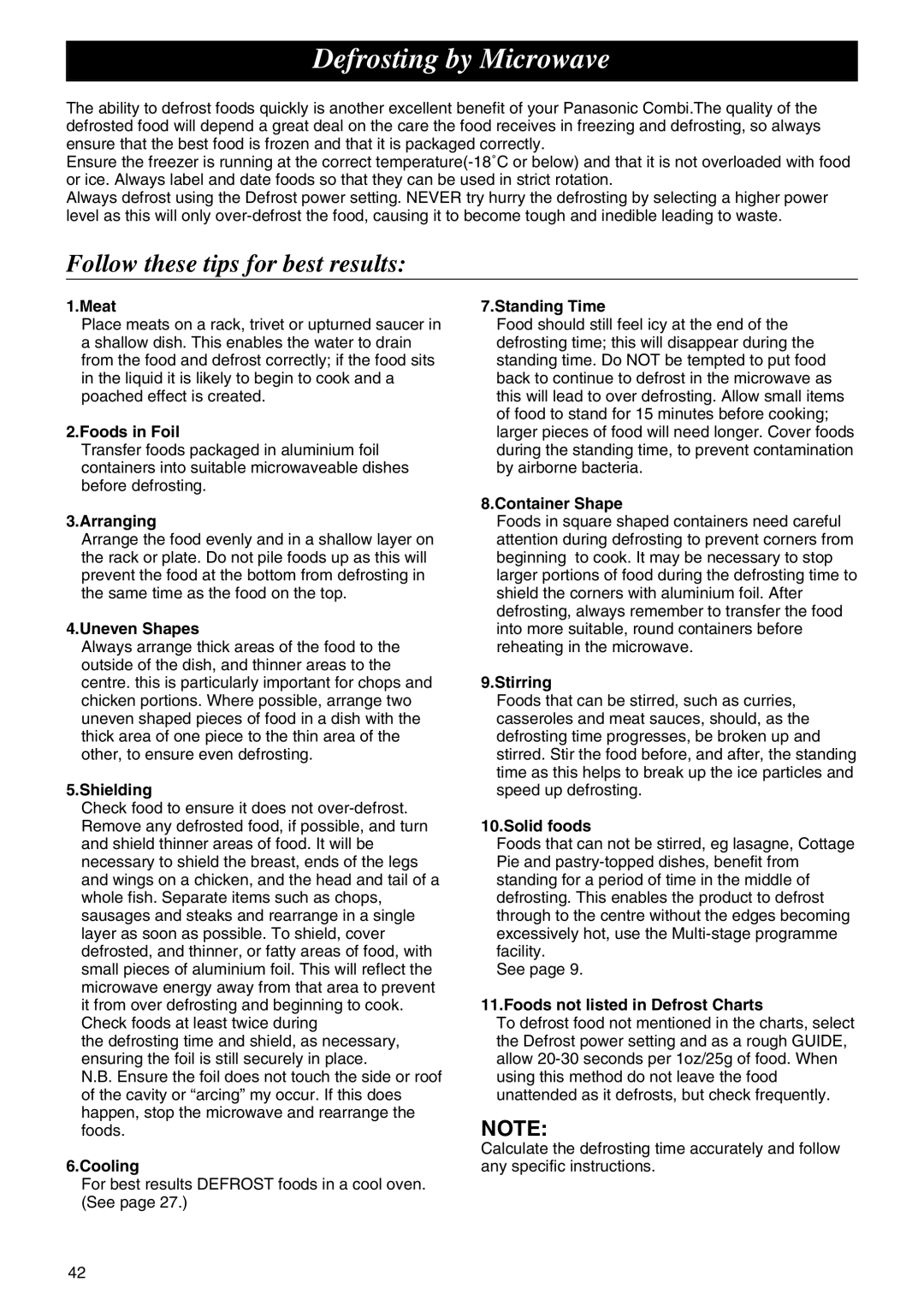
Defrosting by Microwave
The ability to defrost foods quickly is another excellent benefit of your Panasonic Combi.The quality of the defrosted food will depend a great deal on the care the food receives in freezing and defrosting, so always ensure that the best food is frozen and that it is packaged correctly.
Ensure the freezer is running at the correct
Always defrost using the Defrost power setting. NEVER try hurry the defrosting by selecting a higher power level as this will only
Follow these tips for best results:
1.Meat
Place meats on a rack, trivet or upturned saucer in a shallow dish. This enables the water to drain from the food and defrost correctly; if the food sits in the liquid it is likely to begin to cook and a poached effect is created.
2.Foods in Foil
Transfer foods packaged in aluminium foil containers into suitable microwaveable dishes before defrosting.
3.Arranging
Arrange the food evenly and in a shallow layer on the rack or plate. Do not pile foods up as this will prevent the food at the bottom from defrosting in the same time as the food on the top.
4.Uneven Shapes
Always arrange thick areas of the food to the outside of the dish, and thinner areas to the centre. this is particularly important for chops and chicken portions. Where possible, arrange two uneven shaped pieces of food in a dish with the thick area of one piece to the thin area of the other, to ensure even defrosting.
5.Shielding
Check food to ensure it does not
the defrosting time and shield, as necessary, ensuring the foil is still securely in place.
N.B. Ensure the foil does not touch the side or roof of the cavity or “arcing” my occur. If this does happen, stop the microwave and rearrange the foods.
6.Cooling
For best results DEFROST foods in a cool oven. (See page 27.)
7.Standing Time
Food should still feel icy at the end of the defrosting time; this will disappear during the standing time. Do NOT be tempted to put food back to continue to defrost in the microwave as this will lead to over defrosting. Allow small items of food to stand for 15 minutes before cooking; larger pieces of food will need longer. Cover foods during the standing time, to prevent contamination by airborne bacteria.
8.Container Shape
Foods in square shaped containers need careful attention during defrosting to prevent corners from beginning to cook. It may be necessary to stop larger portions of food during the defrosting time to shield the corners with aluminium foil. After defrosting, always remember to transfer the food into more suitable, round containers before reheating in the microwave.
9.Stirring
Foods that can be stirred, such as curries, casseroles and meat sauces, should, as the defrosting time progresses, be broken up and stirred. Stir the food before, and after, the standing time as this helps to break up the ice particles and speed up defrosting.
10.Solid foods
Foods that can not be stirred, eg lasagne, Cottage Pie and
See page 9.
11.Foods not listed in Defrost Charts
To defrost food not mentioned in the charts, select the Defrost power setting and as a rough GUIDE, allow
NOTE:
Calculate the defrosting time accurately and follow any specific instructions.
42
